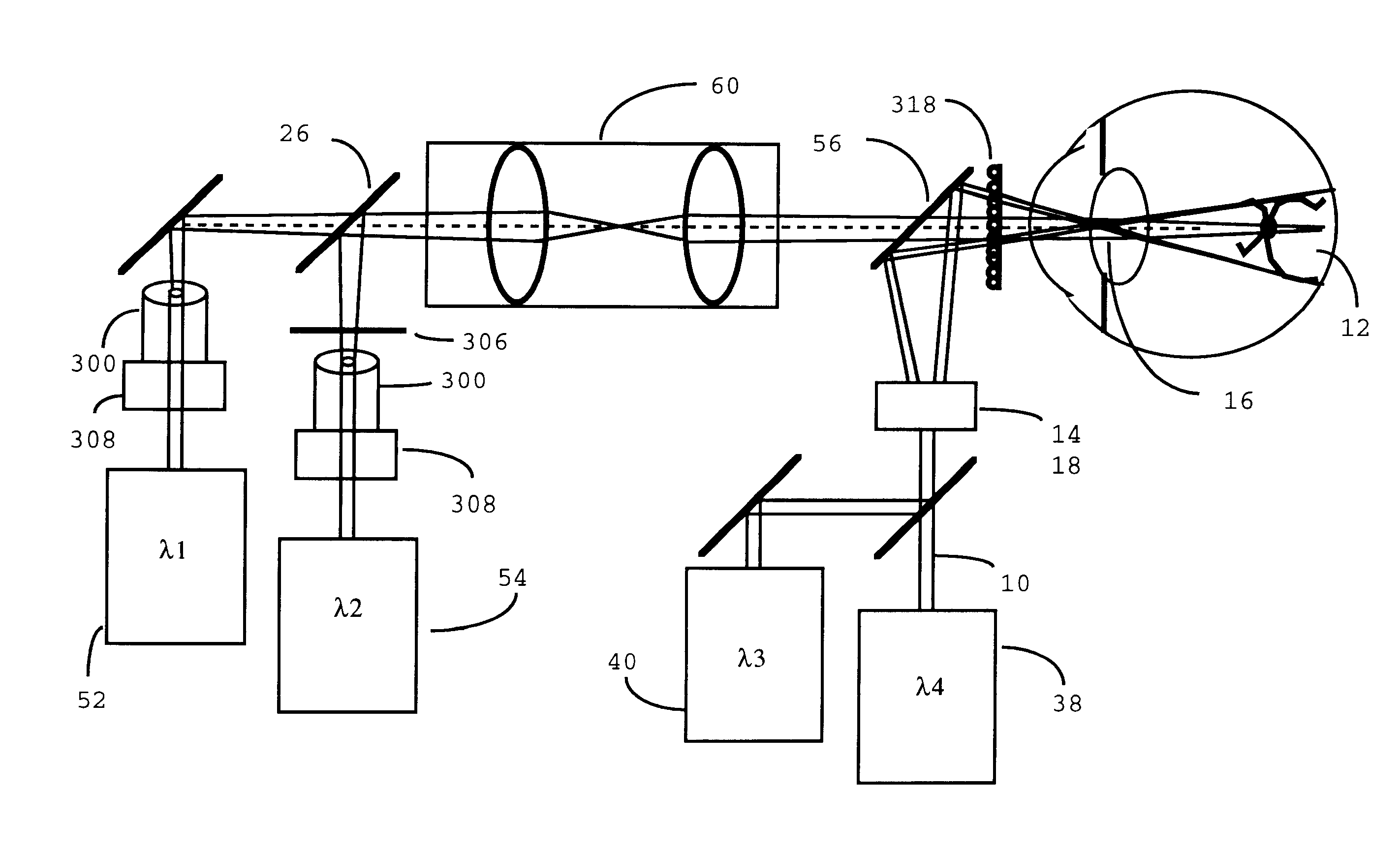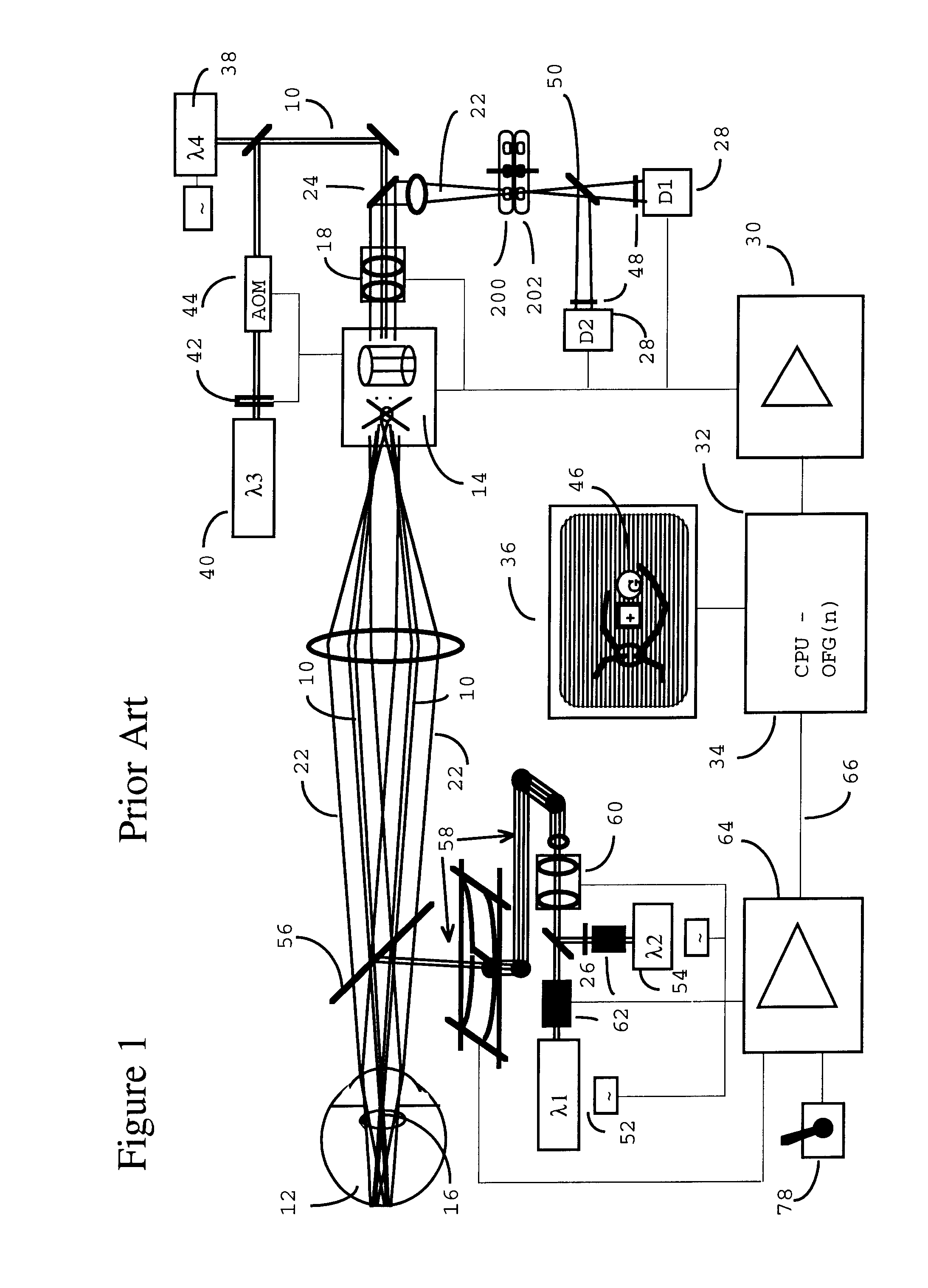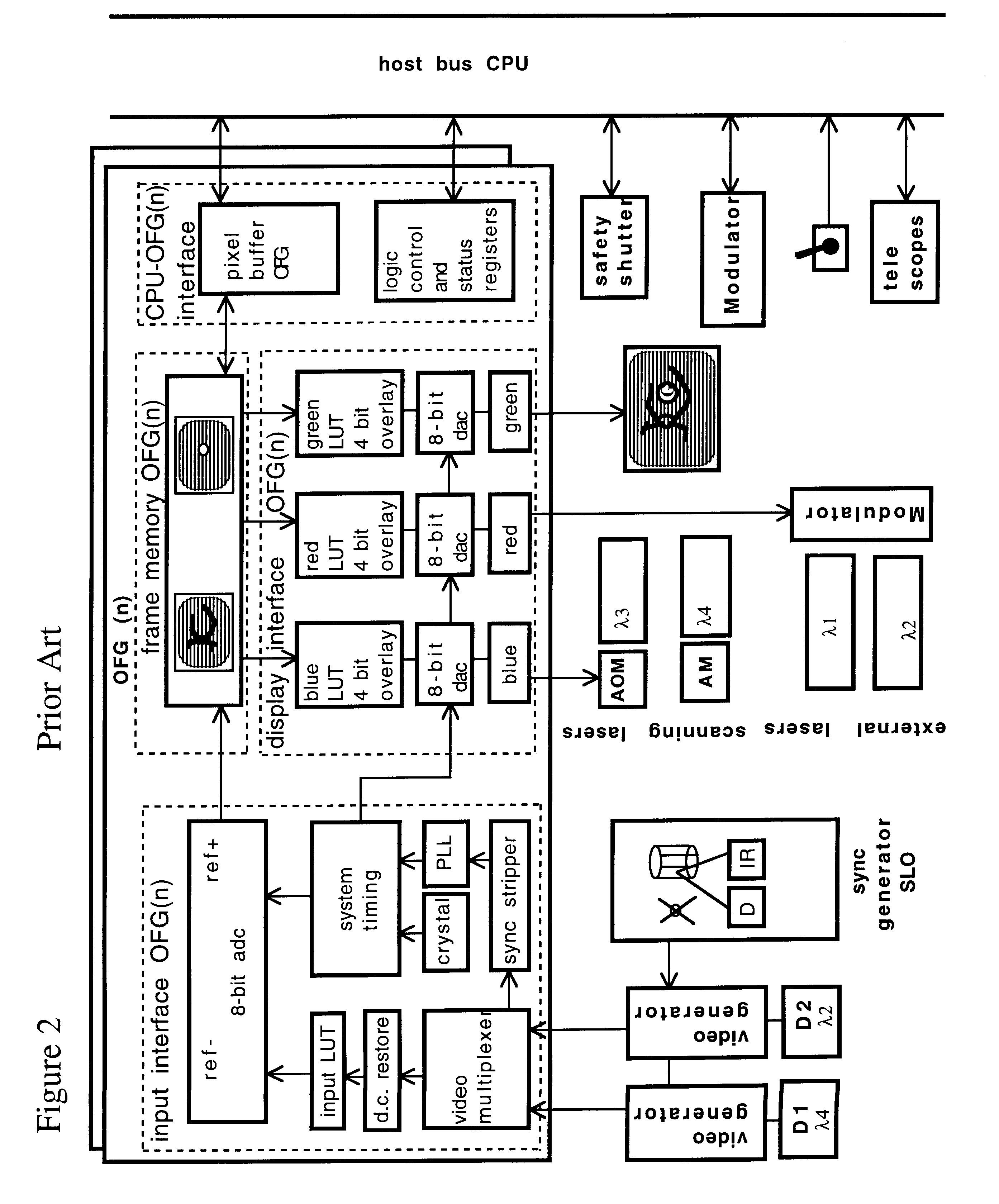Scanning laser ophthalmoscope for selective therapeutic laser
a laser ophthalmoscope and laser technology, applied in the field of ophthalmoscopes, can solve the problems of novel approach, limited fashion, difficult delivery,
- Summary
- Abstract
- Description
- Claims
- Application Information
AI Technical Summary
Problems solved by technology
Method used
Image
Examples
Embodiment Construction
An embodiment of the confocal scanning laser ophthalmoscope for delivery of therapeutic laser to the retina is illustrated in FIGS. 1 and 2 (Van de Velde). The principles of scanning laser ophthalmoscopy are described in detail in the prior art (Pomerantzeff, Saban, Webb). Two additional possibilities for spatial modulation of therapeutic lasers are illustrated in FIGS. 3 and 4.
I. Summary of Prior Art
A confocal scanning laser ophthalmoscope (cSLO) can be optically coupled with multiple external diagnostic or therapeutic laser sources 52, 54 with the help of an appropriate beamsplitter 56. For cSLO imaging, an infra-red diode laser 38 e.g. 792 nm or 830 nm is preferred. For cSLO psychophysics and microperimetry a visible wavelength e.g. 532 nm or 633 nm laser 40 is convenient. The 532 nm wavelength has a superior visibility, especially during photodynamic therapy employing 664 nm or 689 nm laser light. Microphotocoagulation and photodynamic therapy use various wavelength sources 52 b...
PUM
 Login to View More
Login to View More Abstract
Description
Claims
Application Information
 Login to View More
Login to View More - R&D
- Intellectual Property
- Life Sciences
- Materials
- Tech Scout
- Unparalleled Data Quality
- Higher Quality Content
- 60% Fewer Hallucinations
Browse by: Latest US Patents, China's latest patents, Technical Efficacy Thesaurus, Application Domain, Technology Topic, Popular Technical Reports.
© 2025 PatSnap. All rights reserved.Legal|Privacy policy|Modern Slavery Act Transparency Statement|Sitemap|About US| Contact US: help@patsnap.com



